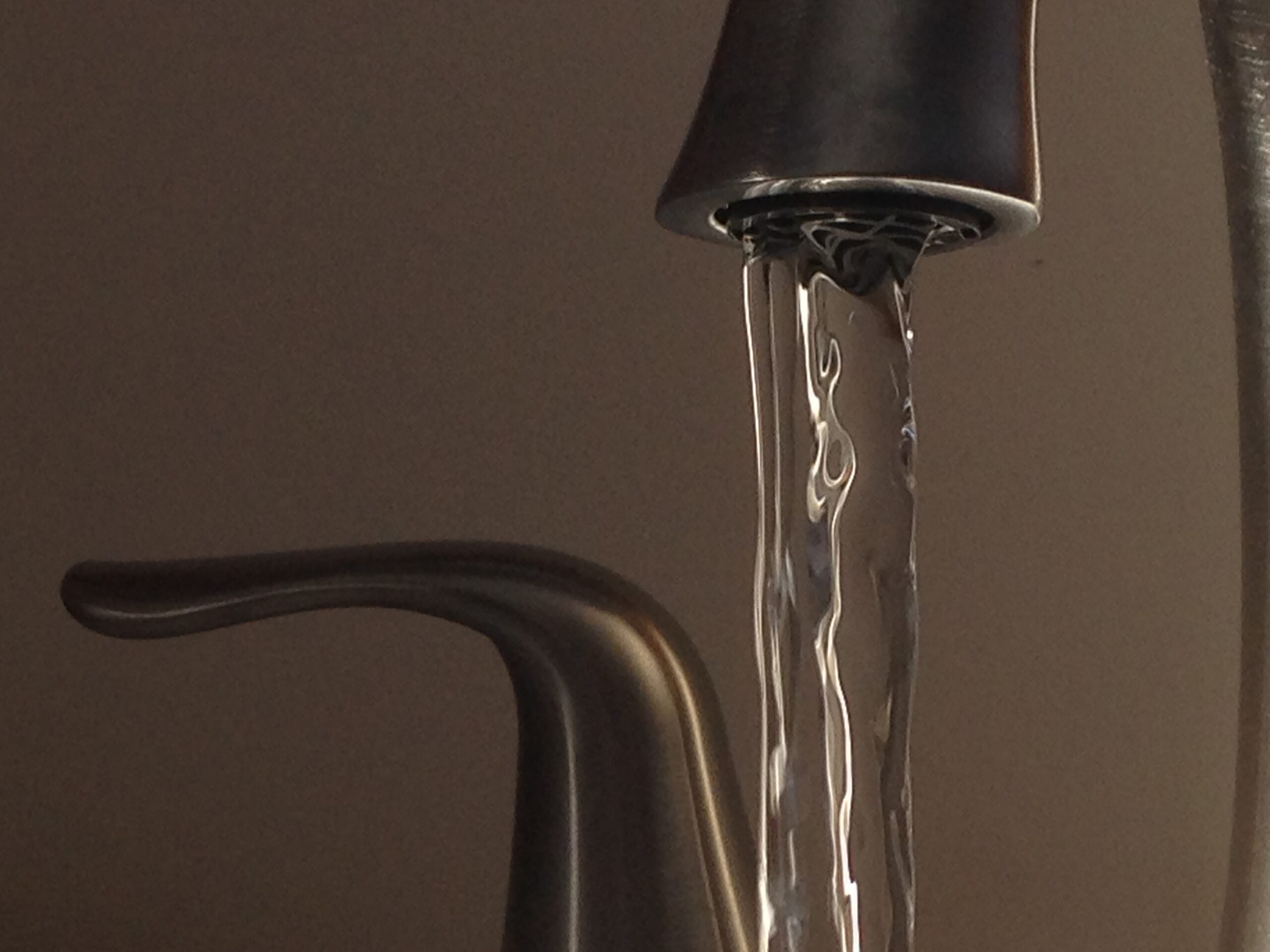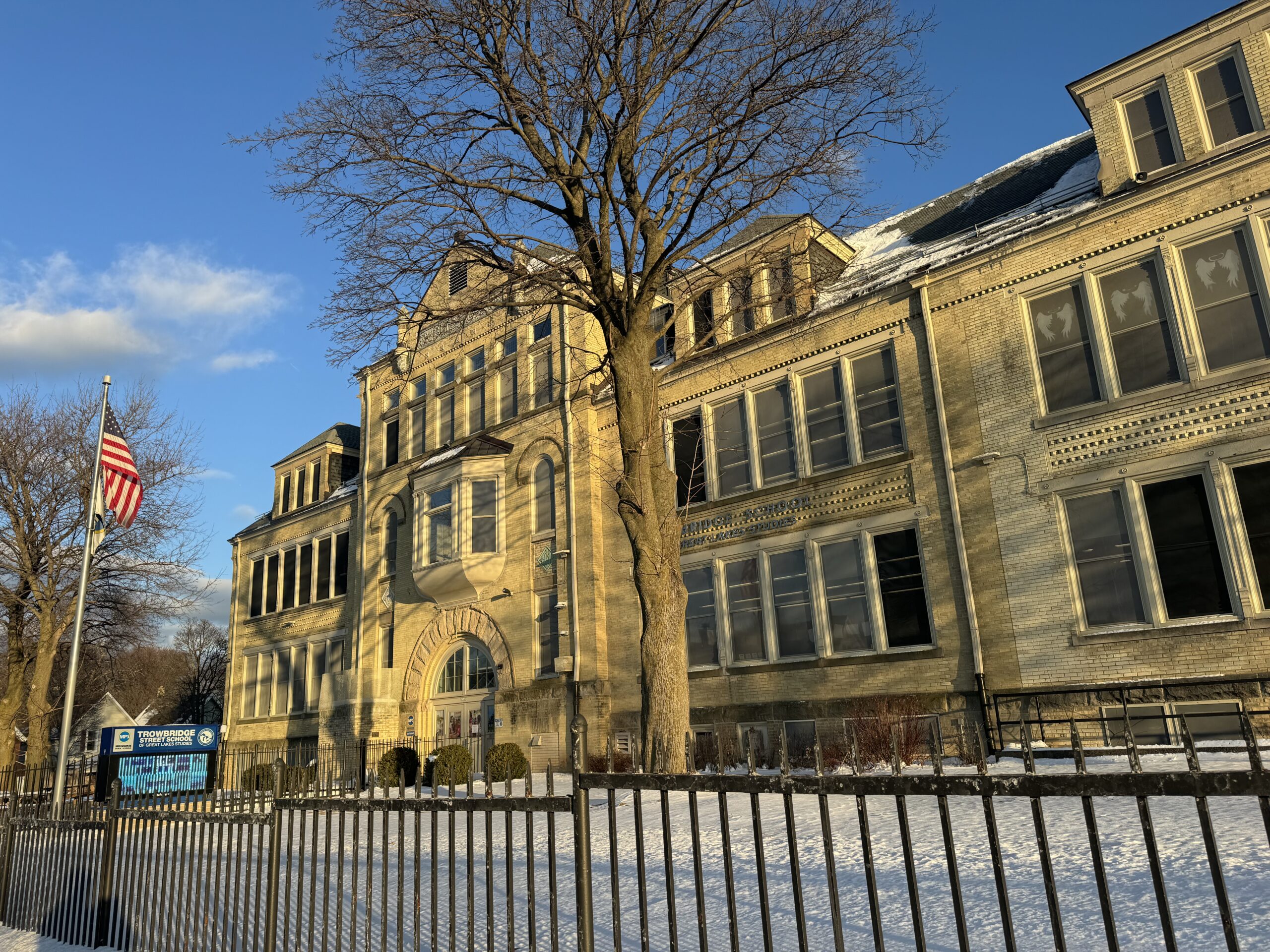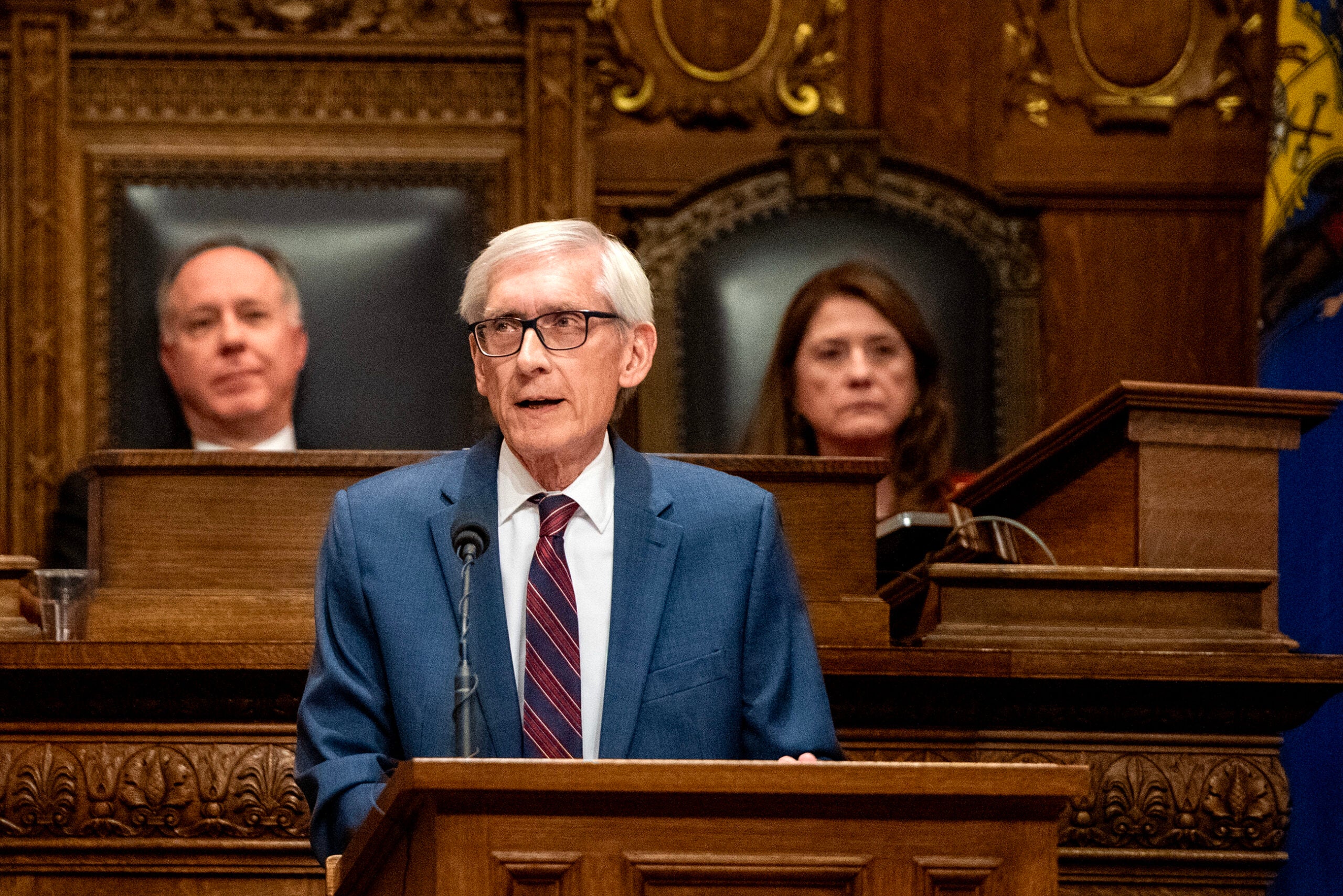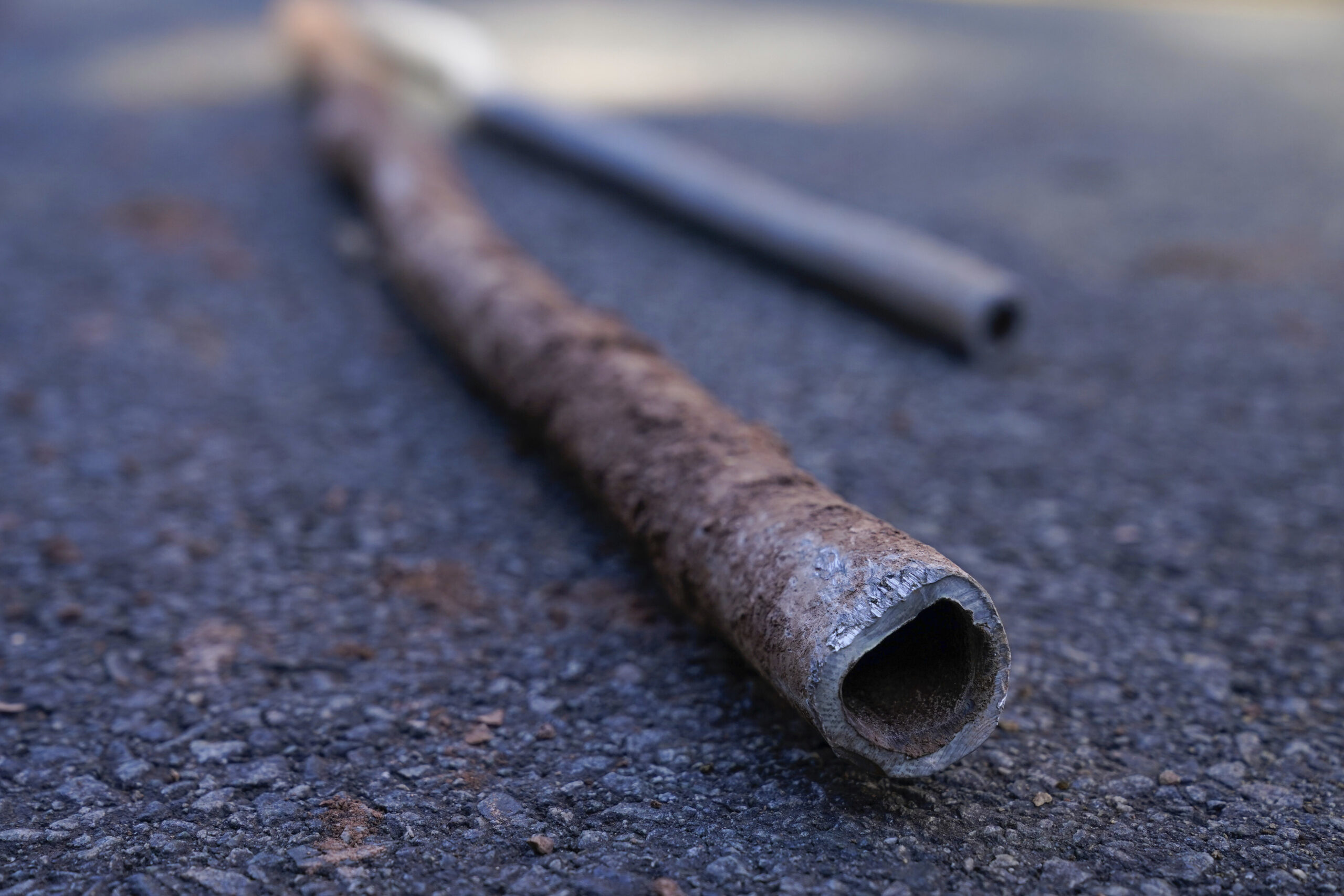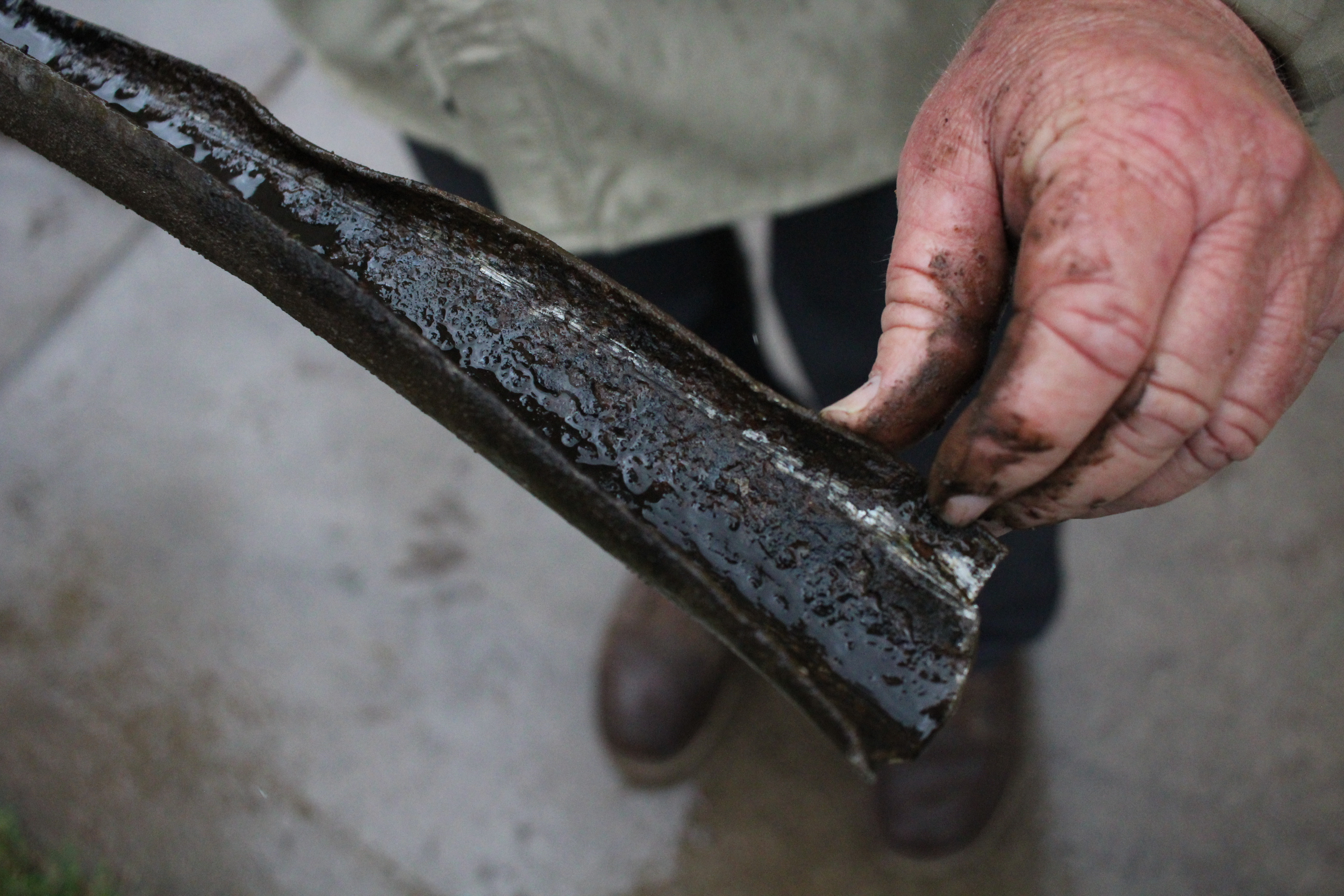Wisconsin Gov. Tony Evers says he will continue his commitment to improving water quality across the state, despite GOP lawmakers removing $40 million from the state budget that would have begun replacing lead service lines.
Evers signed an executive order Monday directing state agencies to create a position in the state Department of Health Services to work with other state agencies to address childhood exposure to lead.
“Since the Legislature failed to properly fund this effort, I’ll do everything within my power as governor to protect Wisconsin children and families to prevent further lead poisoning,” Evers said.
Stay informed on the latest news
Sign up for WPR’s email newsletter.
The governor held a press conference to announce the position Monday at Kenosha day care center, Every Child’s Place Inc. He was joined by Lt. Gov. Mandela Barnes and state Department of Natural Resources Secretary Preston Cole.
He was joined by several Democratic lawmakers, officials from Kenosha, Racine and Milwaukee, and about two dozen children.
Kenosha County is one of five counties with the highest number of lead service lines. Milwaukee, Racine, Manitowoc and Marathon counties round out the top five.
“The sheer volume of lead laterals makes it a statewide crisis,” Cole said. “With nearly 176,000 lead laterals in the state of Wisconsin, it’ll be a heavy lift. There are some 130 cities, towns and villages throughout the state of Wisconsin that have lead laterals. This is not a regional issue.”
“Unfortunately, clean water is not something Wisconsinties have access to, and thousands of people in our great state question whether they can turn on their taps to have safe drinking water,” Cole said.
During his first State of the State speech in January, Evers dubbed 2019 the “Year of Clean Drinking Water.” That included naming someone within DHS to handle replacing lead pipes across the state and secure federal grants for the work.
Evers’ clean water initiative had some success in his budget, which includes $32 million to improve water quality.
That money will be used for a variety of programs, including the clean water fund, which provides financial assistance to municipalities for the planning, design and construction of wastewater treatment facilities and the state’s Safe Drinking Water Loan Program, which provides low-interest loans to municipalities for planning and constructing public drinking water systems.
But Republicans rejected the governor’s proposed $40 million in bonding that his administration said could have replaced about 9 percent of the roughly 170,000 lead service lines statewide.
On Monday, Sen. LaTonya Johnson, D-Milwaukee, and Rep. Kalan Haywood, D-Milwaukee, began circulating a stand-alone bill to increase bonding for lead service line replacement.
Under current law, the state may contract up to $74.9 million in public debt for the Safe Drinking Water Loan Program. This bill increases the bonding authority for the program by $40 million and requires the state Department of Administration to allocate up to $40 million.
A 2013 DHS survey found nearly 4,000 wells in Wisconsin were contaminated beyond water quality standards.
A report released in March gave the state a “F” grade for not preventing lead in school drinking water.
The nonprofit, nonpartisan group Wisconsin Environment and the WISPIRG Foundation, who released the report, said the state isn’t being proactive enough to “get the lead out” of schools and day care centers.
The American Academy of Pediatrics has recommended states and communities adopt a standard of 1 part per billion for lead in drinking water. Lead exposure is harmful to the nervous system and contributes to lower IQs and behavioral disorders in children.
The most recent state data shows there are around 4,300 kids under 6 years old who have been tested had elevated levels of lead.
Wisconsin Public Radio, © Copyright 2025, Board of Regents of the University of Wisconsin System and Wisconsin Educational Communications Board.
